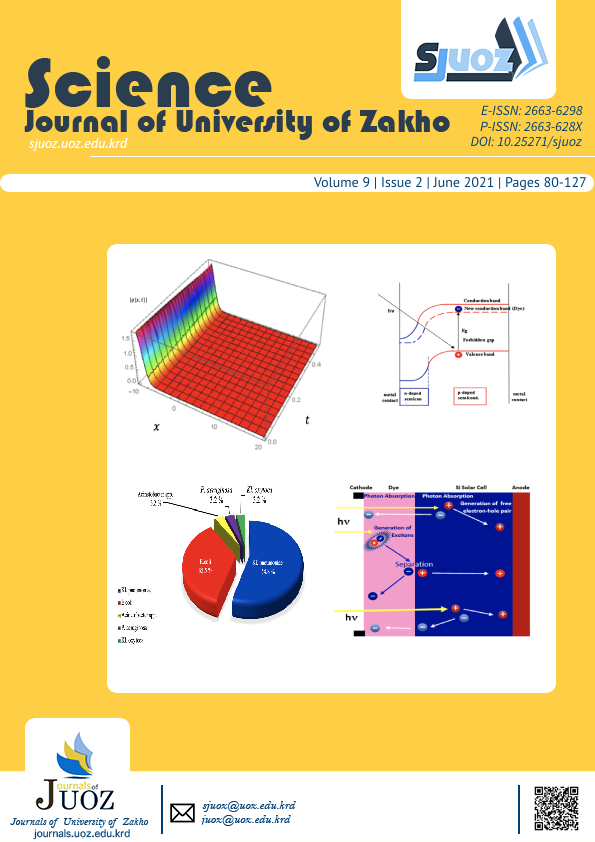Evaluation and Comparison of The Current-Voltage (I-V) Performance for Both Silicon Solar Cells and Dye Sensitized Solar Cell (DSSC) Covered with Natural Plant Dyes
DOI:
https://doi.org/10.25271/sjuoz.2021.9.2.794Keywords:
Si solar cell, Dye-sensitized solar cells, Natural flower dyes, Power conversion efficiencyAbstract
A new concept based on introducing natural dye-sensitized molecules on the surface of Silicon Si solar cell namely “dyed Si solar cell” is introduced. This dye/Si interface is thought to be effectively enhanced efficiency. The IV readings are compared among (a) blank and covered Si solar cells, (b) DSSC using the same sensitized molecules. The results were recorded with different physical parameters like UV-visible Spectrum dyes, light intensity, cell area, and different fabrication Also, cell stability has been recorded. These results serve simply to give some of the cutting-edge of dyed Si solar cell with a huge improvement in its efficiency up to 121% with pot marigold flower dye (CC) dye at its optimum case and 16.53% in arthropodafotos-de- flower dye (ZZ) dye at its lowest case. While in DSSC, the efficiencies associated with the same natural dyes were very limited, rather sometimes they get lower. The results have been compared with similar group studies. Our new concept may be used as a highly promising technology for the dyed Si solar cell to give higher efficiency compare with its blank Si solar cell due to the suitability of dyes with silicon semiconductor, we suggest a figure for the new cell which is an ambiguous mechanism of cooperation between excited molecule with the promoted electron of silicon semiconductor, Si.
Downloads
Downloads
Published
Issue
Section
License
Copyright (c) 2021 Aseel M.A. Zakar, Salah A. Naman

This work is licensed under a Creative Commons Attribution 4.0 International License.
Authors who publish with this journal agree to the following terms:
- Authors retain copyright and grant the journal right of first publication with the work simultaneously licensed under a Creative Commons Attribution License [CC BY-NC-SA 4.0] that allows others to share the work with an acknowledgment of the work's authorship and initial publication in this journal.
- Authors are able to enter into separate, additional contractual arrangements for the non-exclusive distribution of the journal's published version of the work, with an acknowledgment of its initial publication in this journal.
- Authors are permitted and encouraged to post their work online.





